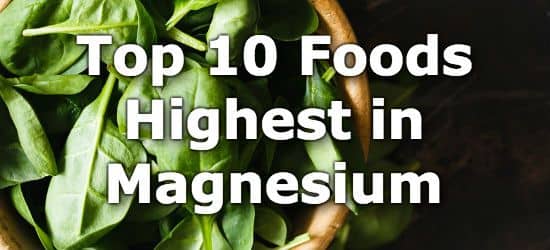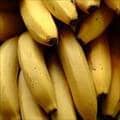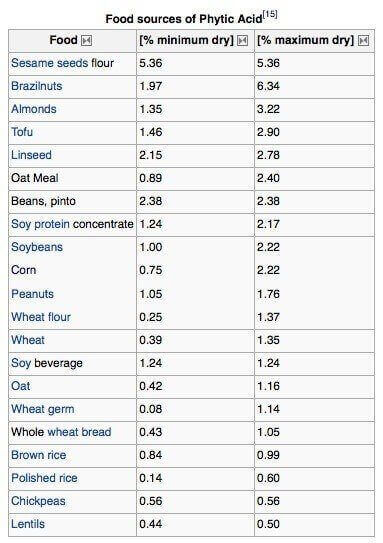Pomegranates for Clogged Arteries
Numerous of people nowadays regularly take harmful cholesterol and blood pressure lowering drugs that apparently do not lower the rate of heart disease specific mortality.
However, a clinical study which has been hidden for a decade has revealed a rather astonishing truth. Namely, its findings raised the awareness about the capacity of pomegranate to successfully restore health and save numerous of heart disease patients.
Namely, this study reported that:
“Pomegranate juice consumption resulted in a significant IMT [intima media thickness] reduction, by up to 30%, after 1 year.”
Therefore, there is a growing interest in this beneficial fruit, as it is completely natural and has no side-effects, it is inexpensive and able to unclog the arteries.
On the other hand, patients spend their money on expensive drugs, as cholesterol-lowering statins, which fail to deliver positive effects, and have been related to more than over 300 adverse health effects.
Namely, the intima media is, in fact, the middle part of the arteries that get inflamed and full of plaque comprised of immune cells, oxidized fats, and their debris, in the condition commonly known as “blocked arteries.”
As this part gets thicker, the blood contents have smaller space to move through the arteries’ opening (lumen). As soon as the arteries are closed or obstructed, the person may suffer from a disastrous injury or even death.
Hence, anything that can reduce or prevent the thickening of intima media in a natural way is extremely beneficial, as far as obtaining a root cause resolution of atherosclerosis, and by implication can significantly prevent deaths related to cardiovascular mortality.
Therefore, as we are living in a world where the major cause for death is the cardiovascular disease, and millions of patients use drugs that only reduce surrogate markers for cardiovascular disease risk, that is, lipoproteins carrying cholesterol, without reducing the heart disease or the number of deaths, it is quite unbelievable how this potential of pomegranate has been neglected.
Namely, if there is a slightest chance that such a simple dietary intervention may reduce or reverse the major disease of millions of people around the world, it would be disastrous not to use its potential.
Therefore, the goal of this article is to shed light on this clinical trial and its findings in order to focus on the importance of food-based interventions as a way to prevent and even reverse the symptoms of the deadliest disease of the modern era.
Israeli researchers published their study in 2014 in Clinical Nutrition under the title“Pomegranate juice consumption for 3 years by patients with carotid artery stenosis reduces common carotid intima-media thickness, blood pressure and LDL oxidation,” in which they exposed their findings that pomegranate, administered in juice form for a period of a year, reversed plaque buildup in the carotid arteries of subjects with severe, but symptomless, carotid artery stenosis (defined as 70–90% blockage in the internal carotid arteries).
This study included 19 patients, 5 women and 14 men, non-smokers, at the age of 65-75. Ten of these patients consumed pomegranate juice, while 9 were in the control group and received placebo.
All participants had similar blood pressure, blood lipid and glucose concentrations, and took similar medications which involved blood-pressure lowering (like β-blockers, ACE inhibitors, or calcium channel blockers) and lipid lowering drugs (like statins).
Those ten patients received 1.69 ounces (50 ml) of pomegranate juice on a daily basis which included .036 milligrams of total polyphenols (primarily tannins and anthocyanins), for a year. Furthermore, five of these decided to continue for up to three years.
These are the results:
“The mean intima media thickness the left and right common carotid arteries in severe carotid artery stenosis patients that consumed pomegranate juice for up to 1 year was reduced after 3, 6, 9 and 12 months of pomegranate juice consumption by 13%, 22%, 26% and 35%, respectively, in comparison to baseline values.”
If a medication was shown to reverse plaque accumulation in the carotid arteries by 13% in a period of 3 months only, it would have been considered a miracle and sold as a multi-billion dollar blockbuster!
This is an impressive finding and provided that a factor in the carotid artery stenosis elevated 9% within a year in the control group, the other group might have shown even better effects than demonstrated.
To be more concrete, if the patients in the pomegranate group had received no treatment, the thickening of their carotid arteries would have progressed just like in the case of the other group, at a rate of 9% a year, i.e. 18% within 2 years, 27% within 3 years.
This indicates that after 3 years of pomegranate treatment, the thickening of the arteries would have been lowered by more than 60% beyond the actual situation in case of the natural progression of the disease.
The experts that conducted this study specified 3 possible mechanisms of action behind the anti-atherosclerotic activity of pomegranate:
Lowering of Blood Pressure: During the intervention, researchers found a significant improvement in blood pressure in patients: their systolic blood pressure was lowered 7%, 11% ,10%, 10% and 12% after 1, 3, 6, 9, and 12 months of use of pomegranate, respectively, compared to values which have been measured before the research.
The ability of this fruit to lower systolic blood pressure shows that it has a healing effect on the endothelium, which is the inner lining of the artery which cannot be completely relaxed in the case of heart disease and leads to a condition called endothelial dysfunction.
Antioxidant properties: The oxidative stress in patients in the pomegranate group has been greatly reduced, as well as the autoantibodies formed against ox-LDL, which is a form of oxidized low density lipoprotein-related to the pathological process of atherosclerosis.
The reduction of oxidative stress was measurable by an increase in the blood serum enzyme paraoxonase 1 (PON1) of up to 91% after a period of 3 years; PON1 is an enzyme whose elevated activity is linked to lower oxidative stress.
This is critical for the anti-atherosclerotic activity of pomegranate due to the lipid peroxidation hypothesis of atherosclerosis, which suggests that their cardiotoxicity/atherogenicity is influenced not by the quantity only, but as well as the quality of the blood lipids (i.e. whether they are oxidized/damaged or not).
What is of higher importance is the fact that this amazing fruit prevents the oxidative stress effects which lead to heart disease.
Plaque Lesion Stabilization: As 2 of 10 patients on PJ (after 3 and 12 months) experienced clinical deterioration, carotid surgery was done and the lesions were examined to determine the difference in composition to those who did not consume this fruit. Thus, 4 distinct positive differences have been noticed:
-Reduced Cholesterol Content: “The cholesterol content in carotid lesions from the two patients that consumed PJ was lower by 58% and 20%, respectively, in comparison to lesions obtained from CAS patients that did not consume PJ (Fig. 3A).”
-Reduced LDL Oxidation: “LDL oxidation by lesions derived from the patients after PJ consumption for 3 or 12 months, was significantly (Po0.01) decreased by 43% or 32%, respectively, in comparison to LDL oxidation rates obtained by lesions from CAS patients that did not consume PJ (Fig. 3D).”
-Increased Reduced Glutathione Content: “A substantial increase in the lesion reduced glutathione (GSH) content, (GSH is a major cellular antioxidant) by 2.5-fold, was observed after PJ consumption for 3 or 12 months, (Fig. 3C).”
-Reduced Lipid Peroxides: “The lipid peroxides content in lesions obtained from the patients after PJ consumption for 3 or 12 months was significantly reduced by 61% or 44%, respectively, as compared to lesions from patients that did not consume PJ (Fig. 3B).”
These conclusions show that despite the ability of pomegranate to reduce the lesion size in the carotid arteries, “the lesion itself may be considered less atherogenic after PJ consumption, as its cholesterol and oxidized lipid content decreased, and since its ability to oxidize LDL was significantly reduced.”
Undoubtedly, this result is revolutionary, as currently, the threat of carotid artery stenosis is considered primarily via the size of the lesion and not by its quality.
This agrees with the belief that the sheer quantity of lipoproteins (i.e. “cholesterol”) in the blood cannot accurately indicate whether those lipoproteins are dangerous (atherogenic); but, if they are oxidized (e.g. ox-LDL) they can be threatening (or representative of a more systemic imbalance in the body) while non-oxidized low density lipoprotein may be regarded as entirely benign, if not crucial for heart and overall body health.
Researchers discovered that the pomegranate group had raised triglycerides levels and very low density lipoprotein, again, underlining that the anti-atherosclerotic properties possible have stronger connection to the enhanced quality of the physiological milieu within which all lipoproteins operate than their number.
Beyond any doubt, all participants in the study took conventional, drug-based care for heart disease, like blood pressure and cholesterol-lowering medications.
Findings showed that pomegranate did not interfere with the drugs used, which shows that it can be taken as a complementary/adjunct therapy for those on drugs.
Moreover, the study found that the condition of the got progressively aggravated (for instance, the mean IMT raised 9% within a year), which indicates that drugs fail to deliver results, and may even speed up the development of the disease.
Source: http://www.healthyfoodhouse.com/worried-clogged-arteries-start-drinking/
































